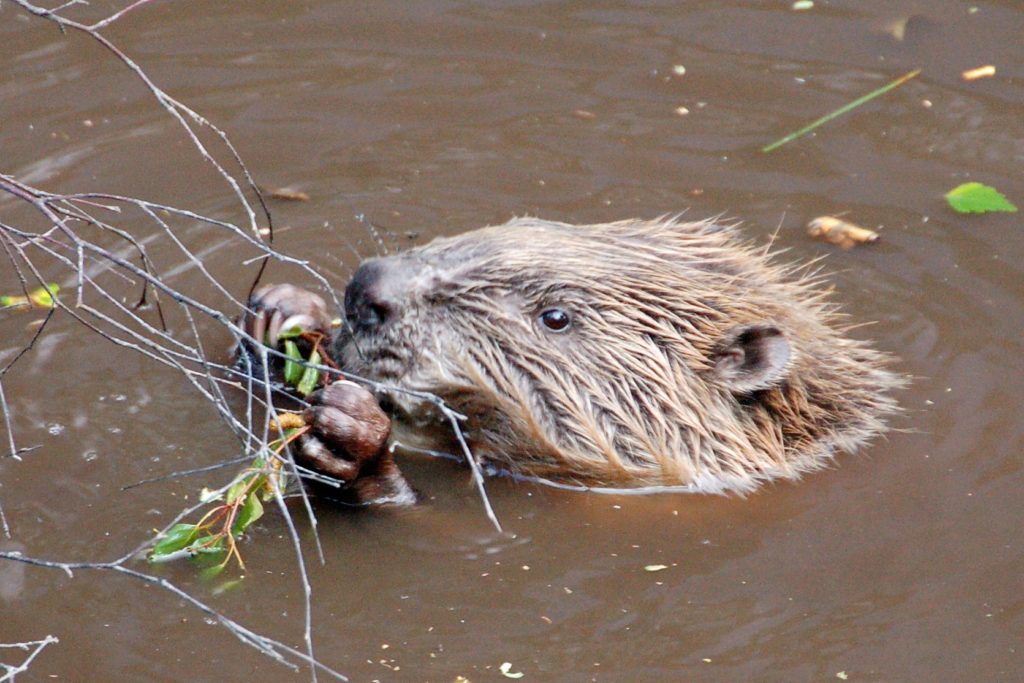‘Good News and Bad News’: Red List of Threatened Species Updated

Scimitar-horned oryx. (Source: Brent Huffman/Ultimate Ungulate)
In a press conference at COP28 on Monday, the International Union for Conservation of Nature (IUCN) issued an update to the Red List of Threatened Species.
The IUCN Red List now includes 157,190 species, of which 44,016 are threatened with extinction. Climate change was identified as a substantial threat to their survival. The situation is particularly dire for amphibians, with over 40% of all assessed species threatened with extinction.
“Climate change is menacing the diversity of life our planet harbours, and undermining nature’s capacity to meet basic human needs,” said Dr Grethel Aguilar, IUCN Director General. “This IUCN Red List update highlights the strong links between the climate and biodiversity crises, which must be tackled jointly. Species declines are an example of the havoc being wreaked by climate change, which we have the power to stop with urgent, ambitious action to keep warming below 1.5 degrees Celsius.”
The Central South Pacific and East Pacific green turtle (Chelonia mydas) populations are respectively Endangered and Vulnerable to extinction, according to today’s IUCN Red List update. Climate change is cited as growing threat to green turtles, with lower hatching success, rising sea levels liable to flood nests, and a decrease in the seagrasses their diet is based on.

Effects of Climate Change
In August 2022, the US National Ocean Service stated that “nearly all” newborn sea turtles in Florida that year were female due to heatwaves.
“Research shows that if a turtle’s eggs incubate below 27.7° Celsius (81.86° Fahrenheit), the turtle hatchlings will be male. If the eggs incubate above 31° Celsius (88.8° Fahrenheit), however, the hatchlings will be female. Temperatures that fluctuate between the two extremes will produce a mix of male and female baby turtles,” the National Ocean Service explained.
That fluctuation, however, has been replaced by steady high temperatures.
“Researchers have also noted that the warmer the sand, the higher the ratio of female turtles,” the National Ocean Service added. “As the Earth experiences climate change, increased temperatures could result in skewed and even lethal incubation conditions, which would impact turtle species and other reptiles.”
The update also includes the first global freshwater fish assessment, which revealed that 25% (3,086 out of 14,898 assessed species) are at risk of extinction. Climate change, pollution, damns and water extraction, overfishing, invasive species and disease were all listed as threats to freshwater fish worldwide.

Threatened Plants and Freshwater Fish
Kathy Hughes, Co-Chair of the IUCN SSC Freshwater Fish Specialist Group, said, “Freshwater fishes make up more than half of the world’s known fish species, an incomprehensible diversity given that freshwater ecosystems comprise only 1% of aquatic habitat. These diverse species are integral to the ecosystem, and vital to its resilience. This is essential to the billions of people who rely upon freshwater ecosystems, and the millions of people who rely on their fisheries.
“Ensuring freshwater ecosystems are well managed, remain free-flowing with sufficient water, and good water quality is essential to stop species declines and maintain food security, livelihoods and economies in a climate resilient world.”
As well as animal species, the list includes threatened plants such as the Big leaf mahogany (Swietenia macrophylla), one of the world’s most commercially sought-after timber trees, has moved from Vulnerable to Endangered on the IUCN Red List.
“This year’s IUCN update sees thousands of trees added to the IUCN Red List, many of which are timber species,” said Megan Barstow, Conservation Officer at Botanic Gardens Conservation International. “These trees are often keystone species in forests as well as important for national and local economies. However, often they are at risk of extinction from unsustainable harvest. It is essential we support botanic gardens to protect and propagate threatened timber species in ex-situ collections and provide more resources towards making informed decisions on their sustainable use and trade.”

Conservation Success Stories
While the inclusion of more species on the threatened list is cause for concern, there are some positive news. Conservation efforts have successfully brought two antelope species back from the brink of extinction. Although changing climatic conditions could undermine their future, experts believe they are proof that the current course can be changed with a concerted effort.
One of these species brought back from the brink is the scimitar-horned oryx (Oryx dammah), which was declared extinct in the wild in 2000 and only survived in captivity. Starting in 2016, captive-bred groups have been released into an enclosure in the Ouadi Rimé-Ouadi Achim Faunal Reserve, in central Chad, and then in the wild. It is now established in the wild, with 331 calves born by 2021.
“Today’s update to the IUCN Red List shows the power of coordinated local, national and international conservation efforts,” said IUCN President Razan Al Mubarak. “Success stories such as that of the scimitar horned oryx show that conversation works. To ensure the results of conservation action are durable, we need to decisively tackle the interlinked climate and biodiversity crises.”
The saiga antelope (Saiga tatarica), which lives across Kazakhstan, Mongolia, Russia and Uzbekistan, has improved from Critically Endangered to Near Threatened. However, as the species is susceptible to disease outbreaks triggered by abnormally high temperatures and humidity, climate change remains a substantial threat.
“Biodiversity data is the lens through which we view the urgent narrative of conservation,” said Dr Sean T. O’Brien, President and CEO of Nature Serve. “Yet, in the face of complexity, we possess the tools to act. Let us use our knowledge and resources to safeguard biodiversity for the generations that follow.”
Do you want to keep up to date? If so, browse our other articles here.







